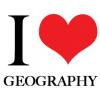- 0 replies
- 2,379 views
- Add Reply
- 3 replies
- 1,696 views
- Add Reply
- 3 replies
- 3,714 views
- Add Reply
- 1 reply
- 1,500 views
- Add Reply
- 0 replies
- 1,123 views
- Add Reply
DRONE SURVEY GUIDELINES IN INDIA
By aryarakesh_16,
Do anyone have any Government guidelines for Drone survey in INDIA.
Is it possible to have lidar based drone survey in INDIA.
Any Idea about Octacopter capable Lidar camera......
Mutli criteria analysis using Arc Map
By Maya007,
Best options to find suitable places for a solar panel installations using multicriteria anlaysis with Arc-Map.Please add in your suggestions
point to raster tool
By Afsheen,
Hi everybody!
Is there any way to convert point features to raster format using point to raster toolbox or any other?
Actually this tool is available with advanced license so i am unable to use it.
Kindly help me to solve this issue.
Thanking you in anticipation.
extract spectral data using SAGA-GIS
By babyshoone,
Hallo,
I'm beginer in use of SAGA-GIS.
I did a topographic correction on OLI/8 image following this steps:
1- I open SRTM of 30m (1arc ) of reolution and OLI image in Q-GIS
2- I cut the image at the study area using Q-GIS
3- I open the cut images (srtm, oli) in SAGA
4-I did topographic correction
I looked for to extract spectral data from corrected image as folow :
1-I open a shapefile contains the points in saga, but when I display the shapefile with i
Merging attribute table of points, lines and polygons into attributes table of classification map
By Afsheen,
Hi!
I want some help regarding attribute tables. I performed supervised classification for my area and also digitized roads by making linear feature class. Now I want to combine these roads with my classification map with their attribute tables. Is there any way to do this? So that I can save these layers in a single map having tiff format.
Kindly help me in this regard!
-
Forum Statistics
8.8k
Total Topics43.5k
Total Posts



